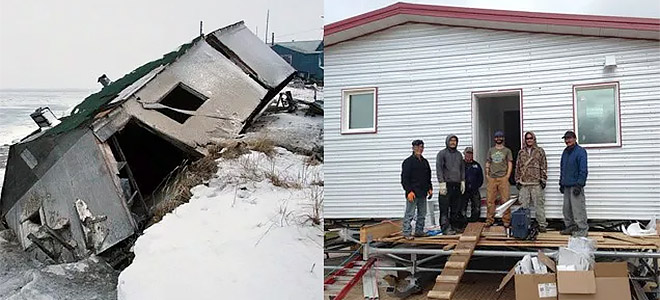
by Elizabeth Arnold
Harvard Kennedy School’s Shorenstein Center
May 29, 2018
The Climate Change Narrative: “Fear, Misery, and Doom”
The importance of narrative in telling the climate change story cannot be underestimated. American sociologist Herbert Blumer developed the view that social problems are not just a reflection of objective conditions, but rather projections of collective views, that “a social problem exists primarily in terms of how it is defined and conceived in society.” Many Americans have not experienced the effects of climate change personally. Most however, have already formed some kind of opinion about it. “Global climate change did not necessarily come into worldwide consciousness through local experience but rather through global public discourses.”
An early mention of climate change in 1957 by Robert C. Cowen in the Christian Science Monitor, titled “Are Men Changing the Earth’s Weather?” began to assign blame.
Industrial activity is flooding the air with carbon dioxide gas. This gas acts like the glass in a greenhouse. It is changing the earth’s heat balance. It could bring anything from an ice age to a tropical epoch…Every time you start a car, light a fire, or turn on a furnace you’re joining the greatest weather “experiment” men have ever launched. You are adding your bit to the tons of carbon dioxide sent constantly into the air as coal, oil, and wood are burned at unprecedented rates.
In their early reporting of the science, journalists helped to establish the concept of human caused climate change in the public mind.
ver the past several decades, as media coverage of climate change has grown, so has academic research of the coverage. A key study was that of the Boykoff brothers, Jules Boykoff, a political scientist, and Maxwell Boykoff, a climate and media researcher. In an analysis of four major American newspapers between 1988 and 2002, they concluded that journalists, by relying on their traditional norm of balance, had introduced a false equivalence into coverage. What’s known as “false balance” or “balance as bias,” is the practice of adding a contrarian view from an organization skeptical of climate change, for example the Heartland Institute, to “balance” the view of a scientific organization, for example the Intergovernmental Panel on Climate Change (IPCC). I, myself, recall being asked to include “another viewpoint” in early reporting about findings of the IPCC.
Maxwell Boykoff took another look seven years later and found that the same news organizations had largely self-corrected, and the “proportion of U.S. coverage” providing this so-called “balanced coverage” of climate change had “decreased from as much as one-third of coverage in 2003 to just over 3 percent in 2006.” Boykoff then called attention to a new trend of daily “fear, misery, and doom headlines and articles,” and cited research in the U.K. that found while “dramatic and fearful representations can successfully raise awareness and concern about climate change…these kinds of images were also likely to distance or disengage individuals from climate change, tending to render them feeling helpless and overwhelmed when they try to comprehend their own relationship with the issue.”
Going a step further, Boykoff teamed up again with researchers from the U.K. and specifically looked at media coverage (including social media) of the IPCC Fifth Assessment Report. Their study concluded that problems caused by climate change were deemed more newsworthy than solutions, and that coverage was fueling a sense of hopelessness. Few IPCC stories were found to have been framed “in terms of opportunities, health effects, ethical considerations, or the economics of global warming.”
Boykoff is currently director of the Center for Science and Technology at the University of Colorado-Boulder, which created a “Media and Climate Change Observatory” that keeps daily track of climate change stories in 38 countries. Boykoff says, “There’s still a pervasive doom and gloom, and this makes sense. It’s logical when you’re talking about people who are impacted by climate change, they are usually adversely impacted. But nonetheless, some of the work that’s been done in social sciences over the years has found that when these stories just focus in on doom and gloom, they turn off those who are consuming them. Without being able to find their own place as a reader, viewer, or listener in those stories, people feel paralyzed and they don’t feel like they can engage and have an entry point into doing something about the problem.” Read more …

